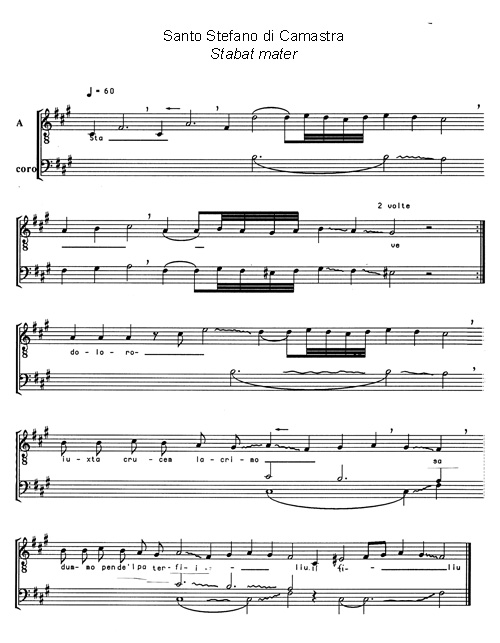|
At Santo Stefano di Camastra the Good Friday procession is characterised by the rendition of two polyphonic songs by a group of singers that is still very united and alive in the transmission of the repertoire.
The polyphonic structure is also in this case in three parts: voice A intones the whole melody; B intervenes upon the last phrase: the chorus, after the starting element, follows in parallel voice A at one third of distance except for at the end of the stanza, when there seems to be a dominant/tonic movement typical of the harmonic bass. One notes, in the development of the main melody, a curious coming together of two musical linguistic levels that are very distant from each other in the adoption of the lexical elements, the first, rich in pauses, even long ones, of embellishments reminiscent of 19th century bel canto, which provides for a extreme dilation of the verbal text (the word "Ave" is intoned on 24 notes); the second, "Gregorian-like", which no longer has the rapid embellishments of the preceding ones in which the melody unwinds exclusively by linked degrees. Even part of the chorus is adapted to this bilingualism: initially melodic, almost controcanto, it becomes, as previously said, a harmonic bass to which voice B is added, in support to a second chording part. The chorus performs a single note, limiting itself to “tuning up” reinforcing in unison the finalis. The melodic line is performed within the range of a fifth making great use of the glissato in the ways already seen in Tusa. |
